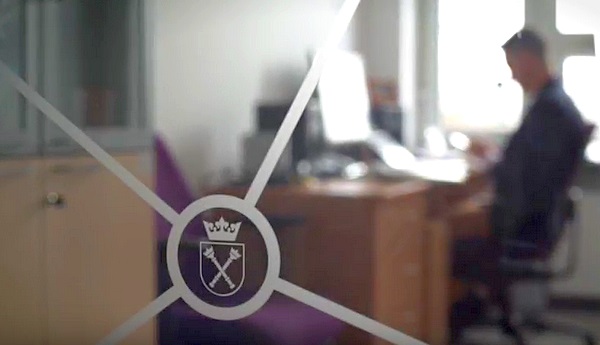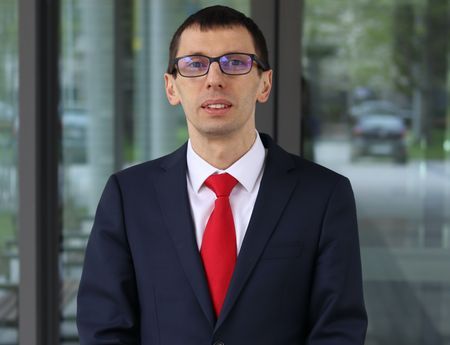
Can deaf people have a good sense of rhythm despite not being able to hear? As it turns out, they can, thanks to the plasticity of the auditory cortex. A study conducted by researchers from the Jagiellonian University Institute of Psychology shows that the parts of the brain which are responsible for recognising rhythm in hearing people completely ‘switch over’ to aid the sight of deaf people. This is yet another proof of the extraordinary plasticity of the human brain.
Biology textbooks tell us that the human brain is divided into different parts, like auditory, visual, and somatosensory cortices. Each of these parts has a specific task to perform. Hearing and recognising rhythm is one of the tasks which the auditory cortex is responsible for. But what happens to it in the case of deaf people?
 ‘We weren’t entirely sure about its purpose. We knew that some of its area was used to help the visual cortex to “see out of the corner of the eye”, i.e. to detect stimuli which would normally be heard, such as approaching cars. The rest, however, was an absolute mystery, because – although it couldn’t help one hear – it wasn’t dead either’, said Dr hab. Marcin Szwed, the leader of the research team.
‘We weren’t entirely sure about its purpose. We knew that some of its area was used to help the visual cortex to “see out of the corner of the eye”, i.e. to detect stimuli which would normally be heard, such as approaching cars. The rest, however, was an absolute mystery, because – although it couldn’t help one hear – it wasn’t dead either’, said Dr hab. Marcin Szwed, the leader of the research team.
It becomes even more intriguing when we take into account the fact that deaf people have a quite good sense of ‘visual rhythm’. It means they are very good at picking up the rhythm of various visual phenomena in their environment, like blinking lights. Up until now, it wasn’t exactly clear how that was possible and what processes caused it. So what’s the answer?
‘In our research, we focused on sight and hearing. We took a closer look at how these two senses replace and complement each other’, explained Dr Szwed. The JU scholars were inspired by another group of researchers, who conducted a study on synesthetes – people for whom the stimulation of one sensory pathway automatically leads to an involuntary experience of a second one. For instance, they may associate specific numbers with colours or sounds. The researchers discovered that such people are excellent at recognising visual rhythm patterns, probably because they can hear them as well.
Along with his PhD students, Dr Szwed has conducted a similar study, but on deaf people. The researchers tested fifteen people with no hearing problems and a matching number of people who were born deaf. During the experiment, the hearing participants were played a series of rhythmic sounds, while the deaf participants were shown blinking lights. The breaks between both of those stimuli were identical. Both groups had to assess whether two subsequent series of stimuli they were exposed to were the same or different. To observe the processes taking place in their brains, magnetic resonance imaging was employed.
 It turned out that some areas of the auditory cortex, normally responsible for hearing rhythm, switched its specialisation to detect visual rhythm. ‘When we hear music, we automatically activate auditory cortex, including the areas which allow us to recognise rhythm. In deaf people, the exact same areas activate when they are exposed to blinking lights or other similar stimuli. So, while the task – recognising rhythm – remains the same, the brain exchanges one sense for the other’, said Dr Szwed.
It turned out that some areas of the auditory cortex, normally responsible for hearing rhythm, switched its specialisation to detect visual rhythm. ‘When we hear music, we automatically activate auditory cortex, including the areas which allow us to recognise rhythm. In deaf people, the exact same areas activate when they are exposed to blinking lights or other similar stimuli. So, while the task – recognising rhythm – remains the same, the brain exchanges one sense for the other’, said Dr Szwed.
As of yet, most scientists concentrated on researching the plasticity of visual cortex in the blind, and auditory cortex was a bit overlooked. ‘People wondered if visual cortex is an exception to the rule. We proved that auditory cortex is also able to change its specialisation. We now know that the human brain is even more adaptable than we thought before. What’s more, we discovered a universal rule guiding the reorganisation of cortices: the task of specific parts is unchanged – it is the sense that changes’, concluded Dr Szwed.
The research was conducted at the JU Institute of Psychology in collaboration with University of Warsaw Section for Sign Linguistics and Polish Academy of Sciences Nencki Institute of Experimental Biology.
Original text: www.nauka.uj.edu.pl





